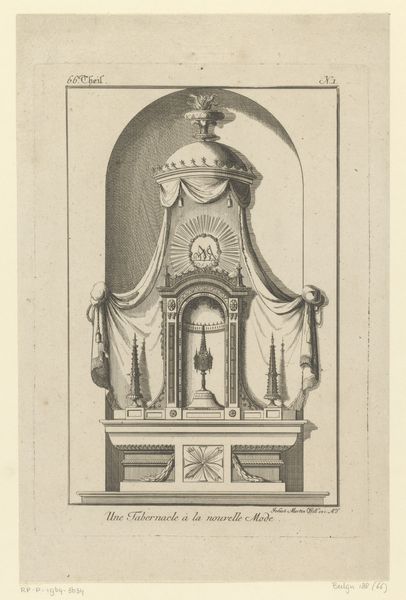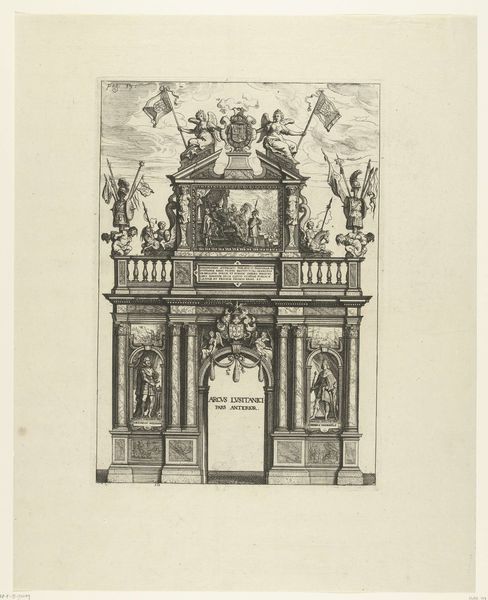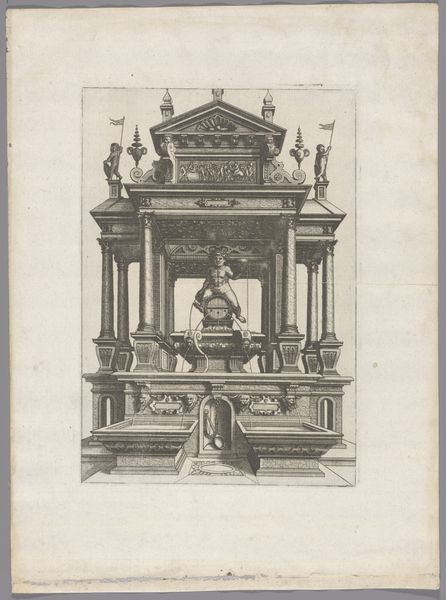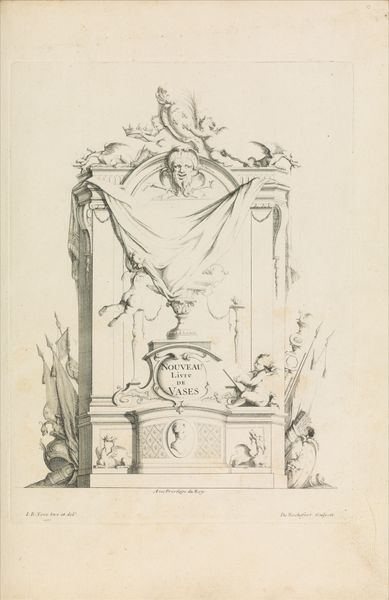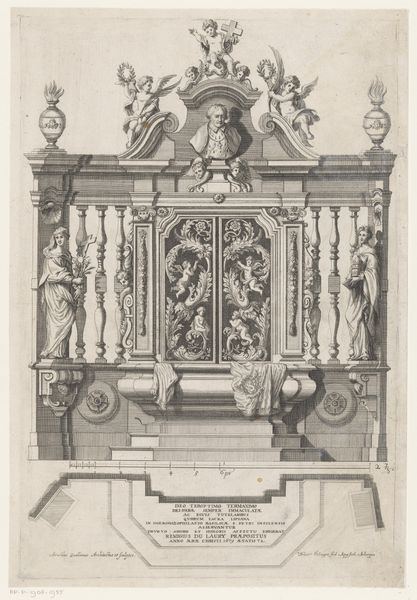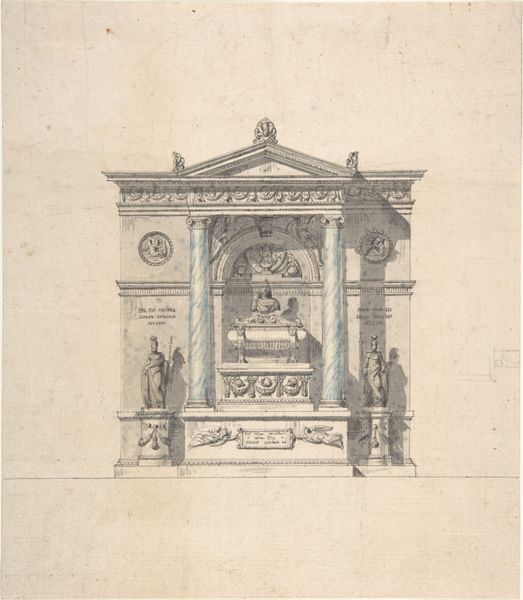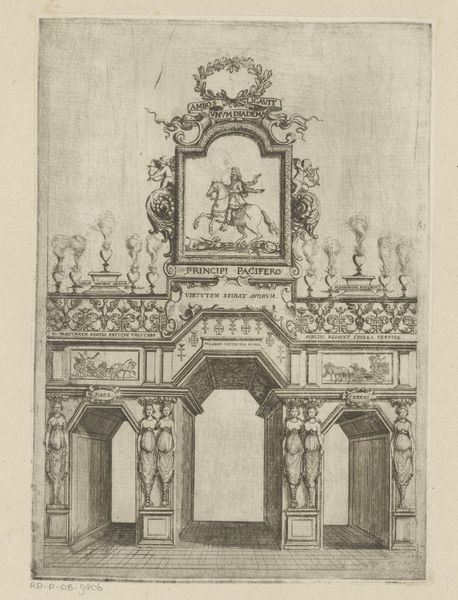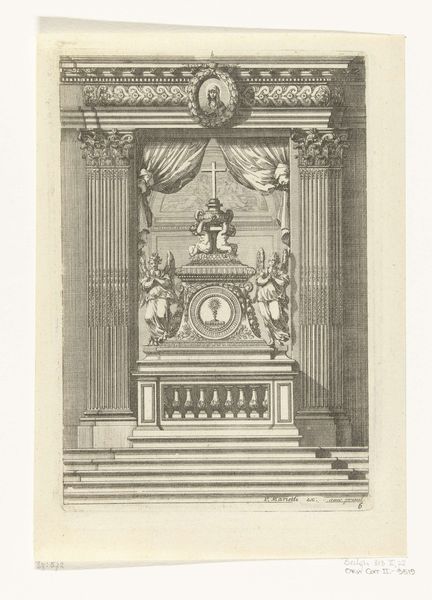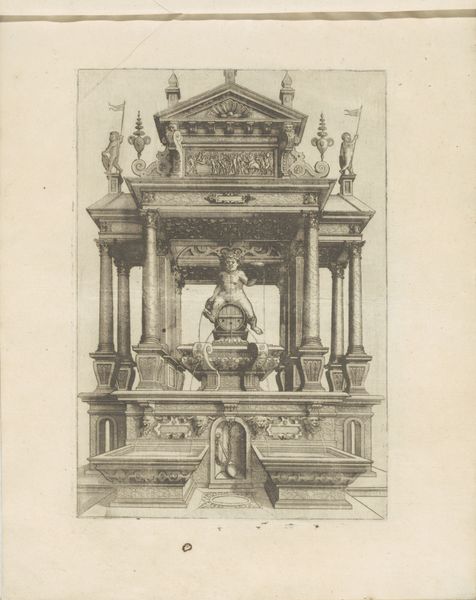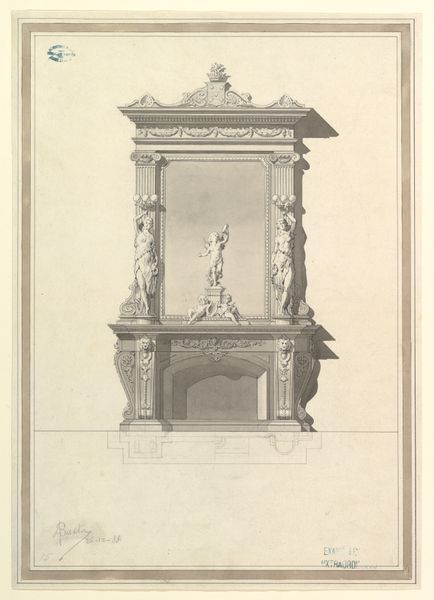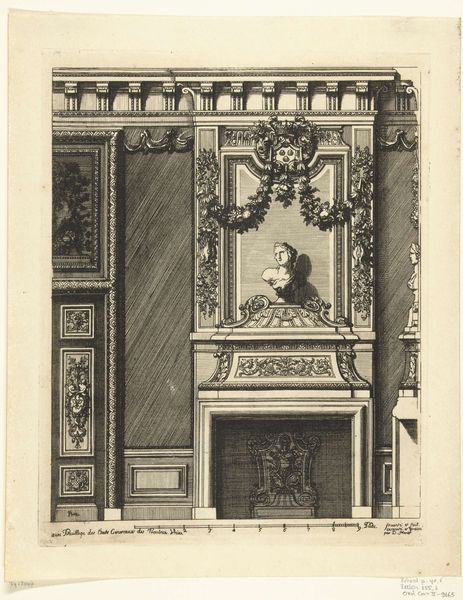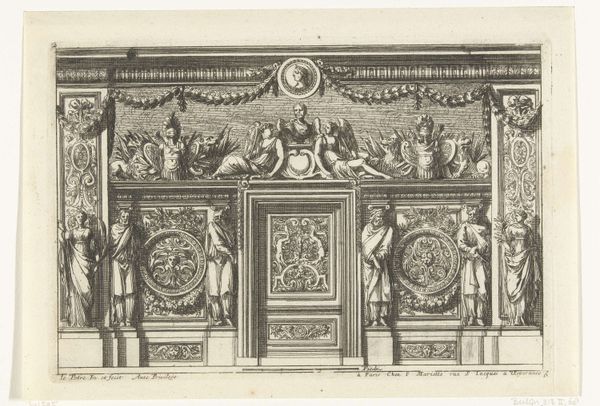
Erepoort bij de intocht van Willem V te Veere (Nr. IX), 1766 1766 - 1767
0:00
0:00
gerardsibelius
Rijksmuseum
print, engraving, architecture
#
neoclacissism
# print
#
cityscape
#
history-painting
#
engraving
#
architecture
Dimensions: height 378 mm, width 430 mm
Copyright: Rijks Museum: Open Domain
Curator: This print, dating from 1766 to 1767, captures the "Erepoort bij de intocht van Willem V te Veere" – or the Triumphal Arch at the Entry of William V into Veere. Gerard Sibelius is credited with its design. Editor: My first impression is one of restrained grandeur, it has an almost ethereal, dreamlike quality. The meticulous lines and the pale hues create an impression of measured elegance, even solemnity, despite being made for a celebratory entry. Curator: Indeed. The choice to represent the event as an engraving aligns perfectly with Neoclassical aesthetics of the time, which valued precision, clarity, and historical allusions. We can appreciate how Sibelius deployed these structural elements for strategic communication. Editor: Look at how prominently classical allegories and iconographic elements figure: the virtues on pedestals, a statue of perhaps Lady Justice dominating the structure's peak with a sword. Then there are the draped curtains framing what appears to be an honorary message at its heart. Such iconography underscores power, legacy, and the continuity of authority, not merely through design. Curator: Precisely. Semiotically, we can read the arch as a physical manifestation of civic pride and allegiance, its structure built upon a bedrock of classical forms, projecting not just aesthetic appeal, but an alignment with a revered past. Observe how Sibelius utilized balanced forms to visually echo this political message. Editor: Yet, do you notice how some elements, despite the Neoclassical impulse, reflect an earlier era? Note how the garlands and the putti on the arch point toward the theatricality and ornamental dynamism that existed within the older Baroque aesthetic. These features were deftly integrated, showcasing how earlier tastes were incorporated into what followed it. Curator: A shrewd point. This synthesis could signal Veere’s effort to balance embracing new leadership while revering local tradition, all while conveying a timeless architectural essence through engraving that we continue to see value in today. Editor: An arch not only as artifice but as cultural touchstone -- visually framing pivotal narratives of belonging, duty, and expectation to that early Dutch locale, but with resonant reverberations still speaking in some visual ways centuries later.
Comments
No comments
Be the first to comment and join the conversation on the ultimate creative platform.
